 Technology peripherals
Technology peripherals
 AI
AI
 Summary: A complete review of the power supply solution for biohybrid robots explored by the BIT team
Summary: A complete review of the power supply solution for biohybrid robots explored by the BIT team
Summary: A complete review of the power supply solution for biohybrid robots explored by the BIT team
Add a plug-in to Xiaoqiang and transform into Super Xiaoqiang. You can also use your mobile phone to control it:
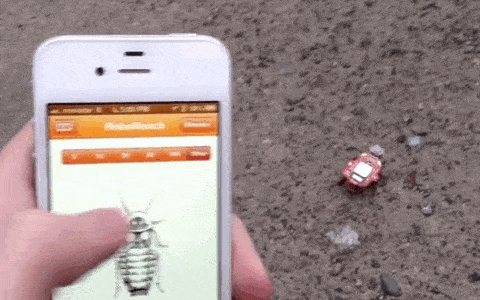
Or implant a chip into Jerry's body so that Tom Cat can no longer bully him
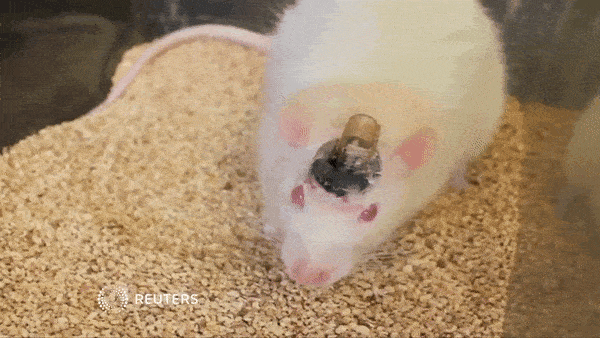

When animals show off their complete bodies, this is a new species - biohybrid robots!
These biohybrid robots are equipped with various electronic devices, so people can control these animals and let them go to some dangerous places to perform tasks. Compared with bionic robots, biohybrid robots use the body of animals to move more flexibly and can move in more complex environments.
But this does not mean that they do not need power supply. In fact, the equipment on animals usually relies on electrical stimulation of nerve endings or muscles to control their actions, which requires the use of electricity. Moreover, other devices such as implanted chips also consume power, so how to provide them with a lasting power supply is still a problem.
Currently, the batteries used by these biohybrid robots usually fall into the following categories:
Common batteries include chemical batteries (such as button batteries), solar cells, biofuel cells (using chemical energy in living organisms), biothermal energy harvesting equipment (collecting and utilizing body heat of living organisms) and biological vibrations Energy harvesting devices (charged by animal movement)

Recently, a team led by Professors Wang Wenzhong and Zhao Jieliang from Beijing Institute of Technology published a review article titled A Review of Energy Supply for Biomachine Hybrid Robots in the new journal "Cyborg and Bionic Systems" of the China Science and Technology Journal Excellence Action Plan. The power supply methods of these common biohybrid robots are sorted out.
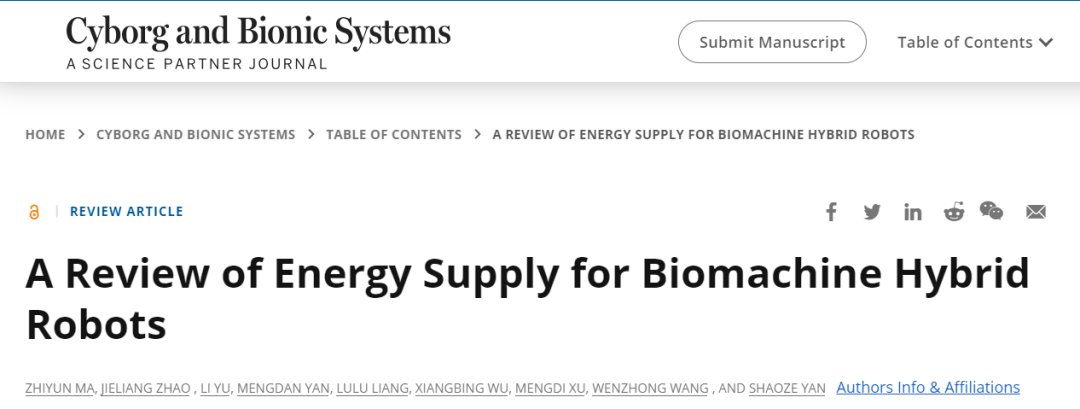
Original link:
https://spj.science.org/doi/10.34133/cbsystems.0053 (Click "Read the original text" in the lower left corner of the article to enter the link)
▍Chemical battery
Chemical batteries are a very mature technology, so they are also the first choice for powering biohybrid robots. Chemical batteries are often used to power insect robots.
For example, the Madagascar cockroach, the biggest among insects, is often caught and used as "coolie". Scientists put a control backpack on the cockroach and used lithium-ion batteries to drive this cockroach-machine hybrid robot. Does it feel like put a high-tech vest on a cockroach?
What's more, button batteries are used to provide power for low-power Bluetooth wireless transceivers and other small parts on the robot cockroach. These small parts have been rigorously tested in experiments, and each can work continuously for 12 hours.
Lithium polymer battery has become a big star because it has high energy density and is very light. Imagine letting a cockroach carry a lithium polymer battery and transform into a super insect and become a disaster rescue hero.
In addition, there is also a team using a 7.4V, 125 mAh lithium polymer battery to power a cockroach robot named CameraRoach. The camera on this guy is like a clairvoyant, it can report its location to the remote controller at any time, and it can also get more energy supply through the boost converter. Someone else invented a micro-control backpack powered by a button battery, specifically used to control the jumping of locusts. It can make the locusts jump more than 20 times in more than 10 minutes!
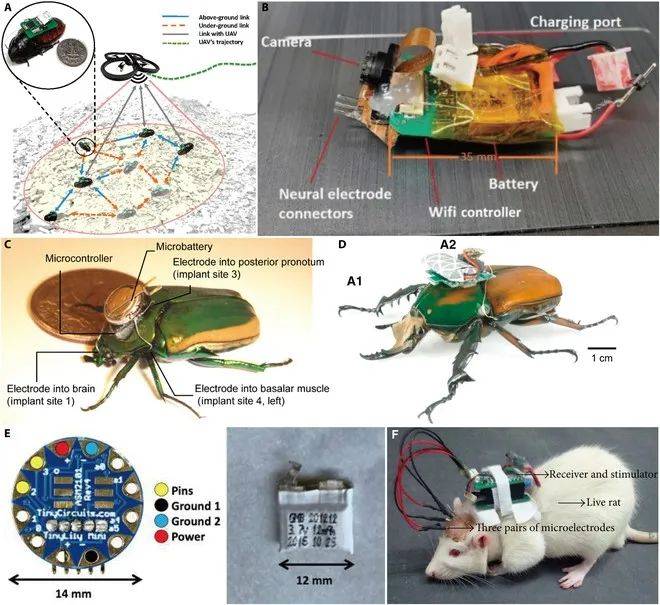
For flying insects, the lighter the equipment on your back, the better. The scientists found two ultra-light 8mAh coin batteries for the moth robot, with a total weight of only 120mg. Then they replaced it with a 3.6V, 8.5mAh lithium polymer battery, which weighed only 300mg. Such a light battery can make the moth robot fly more happily and work continuously for more than 5 hours
Except for insect robots, they don’t even spare marine life. A team has also developed a jellyfish robot that uses a 10mAh lithium polymer battery. This microelectronic controller is like a portable, self-sufficient small device that can make the jellyfish move at any time.
In contrast, vertebrates such as mice, fish or pigeons are not so picky about battery weight, so scientists are paying more attention to the overall performance of the battery at this time. The most commonly used battery here is lithium polymer battery. For example, there is a mouse robot that uses two 120mAh lithium polymer batteries to provide power for the miniature camera and electronic components carried by the mouse, so that the mouse can operate smoothly Escape the maze. There is also a pigeon navigation control system powered by a 3.7V, 120mAh lithium polymer battery.
Solar cell is a device that uses solar energy to convert into electrical energy. It enables sustainable energy use by converting sunlight into electrical current. Solar cells usually consist of multiple photovoltaic cells that absorb sunlight and generate a flow of electrons. This flow of electrons is transported through wires and ultimately converted into usable electricity. Solar cells can be widely used in households, industry, agriculture and other fields to provide people with clean and renewable energy sources. As technology develops, the efficiency and cost of solar cells continue to improve, making solar power a viable and sustainable energy option
CurrentlySome people use a solar chip with a size of 25mm² and a mass of 63mg to power the moth robot. The working principle is very similar to that of a battery, and its voltage is 4V. Under natural light, a solar cell can produce a stable output of nearly 200 μW, but under artificial lighting conditions or shade, the output may be as low as 4 μW.
However, insects will not stay in the sun to recharge the battery, so the researchers set up a virtual fence for the cockroach to "draw the ground as a prison" and let it stay in an area near the light source until it is fully charged. Experimental studies have shown that a 20mA battery can be fully charged within 2 hours under direct and diffuse sunlight, focused white light LED, or a lamp at a distance of 8cm.
Solar cells do not perform well when exposed to environmental influences. For insect robots that like to hide in dark places, the use of solar cells is more limited
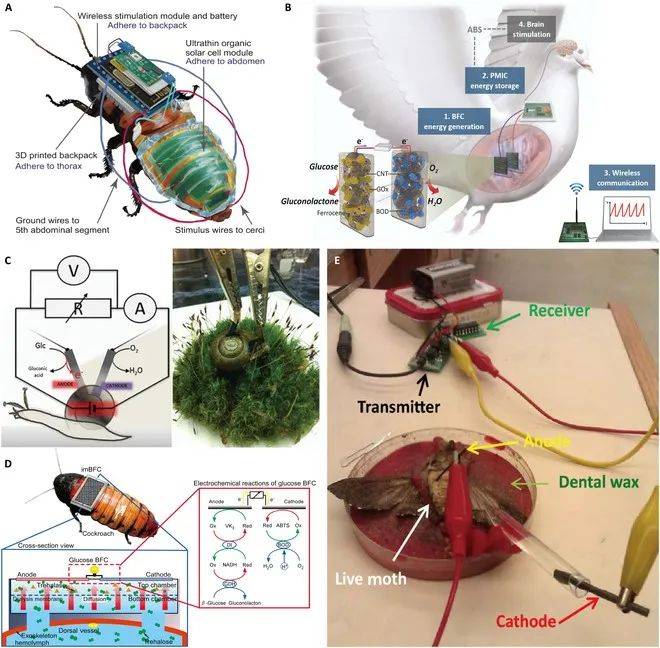
Biofuel cell is a device that uses biomass materials as fuel and converts them into electrical energy. It uses biomass resources, such as crop residues, waste and vegetable oil, to generate electricity through chemical reactions. Biofuel cells are renewable, low-emission and high-efficiency, and are widely used in the energy field. It is considered an environmentally friendly and sustainable energy solution and is expected to replace traditional fuel cells in the future
The next few power supply methods are all "wool comes from the sheep", that is, energy is provided through the animal itself. For example, biofuel cells convert chemical energy in living organisms into electrical energy.
Biofuel cells are divided into microbial fuel cells and enzyme fuel cells. Enzyme biofuel cells (EBFC) use enzymes as catalysts to oxidize glucose in the body and are considered the most suitable for implanting organisms The battery inside the body. However, this kind of battery is more suitable for larger animals, such as mice, rabbits, pigeons, etc., but is not suitable for use on insects. Using glucose and oxygen from pigeons’ bodies, the biofuel cell’s power is 0.12 mW outside the body and 0.08 mW inside the body. By using a power management integrated circuit, sufficient energy can be harvested at a rate of 28.4 mJ in 10 minutes.
Compared with ordinary chemical batteries, The advantage of biofuel cells is that the chemical reactants they require come from animal body fluids, so they can be replenished continuously, allowing the battery to work continuously, in theory Can run indefinitely. But in fact, the service life of this kind of battery is very short, and the energy density is relatively low, so many researchers place their hope on using nanomaterials to make fuel cells.
▍Biothermal energy collection equipmentThe body heat of animals can also be used to power electronic devices. But currently this is mainly used on humans. In order to create wearable electronic devices that can power themselves,
scientists have studied many kinds of thermoelectric conversion devices,these devices can convert our body heat into electrical energy. Considering the portability of
wearable devices, scientists have conducted research in many aspects, such as how to use temperature differences to generate electricity, how to optimize the cold and hot sides of thermoelectric conversion devices, and how to make materials and equipment are more flexible, and how to optimize various characteristics from two-dimensional to three-dimensional. As for animals, someone installed a thermoelectric energy harvester on the neck of a sheep, and its maximum average output power can reach 173 microwatts. There are also scientists who have designed a miniature thermoelectric energy harvester that can be implanted in the beetle. The thermocouple material of this collector is Bi2Te3/Sb2Te3, which can be placed on the back of the beetle in its larval stage. The cold end of this collector is exposed to the air, which creates a temperature difference, and both the thermocouple and the cold end are attached to a flexible polymer substrate. This harvester can achieve an output power density of 10 microwatts per square centimeter at a temperature difference of 11°C. Generally speaking, the biothermal energy collector is very efficient and environmentally friendly, but its working principle has some limitations. Only when there is a sufficient temperature difference can more electricity be generated. Therefore, the power density of this kind of collector is relatively low and it is difficult to meet higher power supply needs. In recent years, researchers have conducted research in many aspects, such as designing and synthesizing some new materials, and also designing some micro-nano structures to improve the efficiency of the collector. The purpose of these studies is to create more efficient and higher power density biothermoelectric energy harvesters. Biological vibration energy harvester is a device that can harvest energy from the vibration of living organisms Animals produce vibrations when they move, which can also be used to provide power. The most studied vibration-electrical conversion mechanisms are based on piezoelectric, electromagnetic and electrostatic conversion. Vibration collectors are used on fish, pigeons, pheasants and giraffes, and someone has even developed an air-bag friction nanogenerator covered with an antibacterial coating to power a fish robot. The nanogenerator generates a peak power of 0.74 milliwatts every time the fish tail swings, and its voltage reflects the behavior of the fish tail in real time. Biological vibration energy harvesters currently still have some problems, such aslow energy conversion efficiency, low power density, narrow frequency bandwidth, and insufficient miniaturization and integration. In order to improve these problems, researchers are conducting research from various aspects, such as composite material technology, hybrid energy conversion mechanism, multi-stable structure and frequency up-conversion structure. In short, the energy system of biohybrid robots has attracted the attention of many researchers, because it determines whether biohybrid robots can develop smoothly in the future. The energy currently used is mainly chemical batteries, which can stably provide power. But chemical batteries also have some problems, such as heavy weight, large volume and insufficient energy density. But what is more important is how to make the energy supply of the biohybrid robot last longer and avoid affecting the normal operation of the robot due to battery replacement or charging.
studying self-powered devices that can utilize solar energy, bioenergy, biothermal energy, and biovibration energy. There are still some problems with the self-powered devices currently being studied, such as low conversion efficiency, small output power, unstable energy supply, and poor compatibility with biological carriers. In the future, researchers need to solve these problems and develop more efficient, longer-lasting, and lighter energy supply devices so that biohybrid robots can better serve humans. 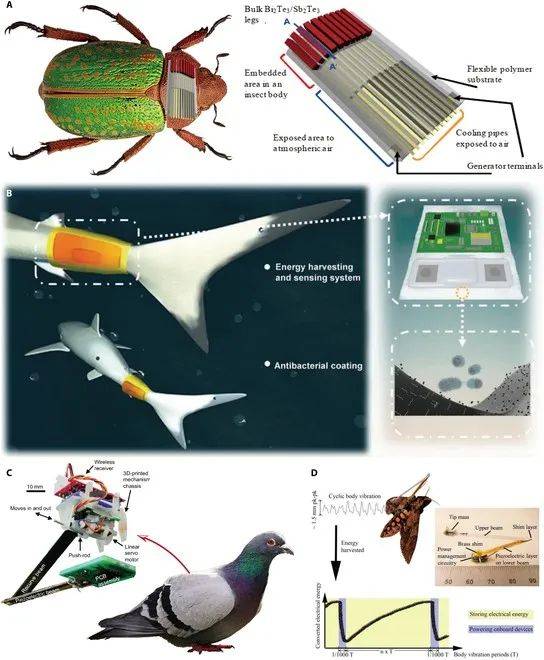
The above is the detailed content of Summary: A complete review of the power supply solution for biohybrid robots explored by the BIT team. For more information, please follow other related articles on the PHP Chinese website!

Hot AI Tools

Undresser.AI Undress
AI-powered app for creating realistic nude photos

AI Clothes Remover
Online AI tool for removing clothes from photos.

Undress AI Tool
Undress images for free

Clothoff.io
AI clothes remover

AI Hentai Generator
Generate AI Hentai for free.

Hot Article

Hot Tools

Notepad++7.3.1
Easy-to-use and free code editor

SublimeText3 Chinese version
Chinese version, very easy to use

Zend Studio 13.0.1
Powerful PHP integrated development environment

Dreamweaver CS6
Visual web development tools

SublimeText3 Mac version
God-level code editing software (SublimeText3)

Hot Topics
 What is Model Context Protocol (MCP)?
Mar 03, 2025 pm 07:09 PM
What is Model Context Protocol (MCP)?
Mar 03, 2025 pm 07:09 PM
The Model Context Protocol (MCP): A Universal Connector for AI and Data We're all familiar with AI's role in daily coding. Replit, GitHub Copilot, Black Box AI, and Cursor IDE are just a few examples of how AI streamlines our workflows. But imagine
 Building a Local Vision Agent using OmniParser V2 and OmniTool
Mar 03, 2025 pm 07:08 PM
Building a Local Vision Agent using OmniParser V2 and OmniTool
Mar 03, 2025 pm 07:08 PM
Microsoft's OmniParser V2 and OmniTool: Revolutionizing GUI Automation with AI Imagine AI that not only understands but also interacts with your Windows 11 interface like a seasoned professional. Microsoft's OmniParser V2 and OmniTool make this a re
 Replit Agent: A Guide With Practical Examples
Mar 04, 2025 am 10:52 AM
Replit Agent: A Guide With Practical Examples
Mar 04, 2025 am 10:52 AM
Revolutionizing App Development: A Deep Dive into Replit Agent Tired of wrestling with complex development environments and obscure configuration files? Replit Agent aims to simplify the process of transforming ideas into functional apps. This AI-p
 I Tried Vibe Coding with Cursor AI and It's Amazing!
Mar 20, 2025 pm 03:34 PM
I Tried Vibe Coding with Cursor AI and It's Amazing!
Mar 20, 2025 pm 03:34 PM
Vibe coding is reshaping the world of software development by letting us create applications using natural language instead of endless lines of code. Inspired by visionaries like Andrej Karpathy, this innovative approach lets dev
 Runway Act-One Guide: I Filmed Myself to Test It
Mar 03, 2025 am 09:42 AM
Runway Act-One Guide: I Filmed Myself to Test It
Mar 03, 2025 am 09:42 AM
This blog post shares my experience testing Runway ML's new Act-One animation tool, covering both its web interface and Python API. While promising, my results were less impressive than expected. Want to explore Generative AI? Learn to use LLMs in P
 How to Use YOLO v12 for Object Detection?
Mar 22, 2025 am 11:07 AM
How to Use YOLO v12 for Object Detection?
Mar 22, 2025 am 11:07 AM
YOLO (You Only Look Once) has been a leading real-time object detection framework, with each iteration improving upon the previous versions. The latest version YOLO v12 introduces advancements that significantly enhance accuracy
 Top 5 GenAI Launches of February 2025: GPT-4.5, Grok-3 & More!
Mar 22, 2025 am 10:58 AM
Top 5 GenAI Launches of February 2025: GPT-4.5, Grok-3 & More!
Mar 22, 2025 am 10:58 AM
February 2025 has been yet another game-changing month for generative AI, bringing us some of the most anticipated model upgrades and groundbreaking new features. From xAI’s Grok 3 and Anthropic’s Claude 3.7 Sonnet, to OpenAI’s G
 Elon Musk & Sam Altman Clash over $500 Billion Stargate Project
Mar 08, 2025 am 11:15 AM
Elon Musk & Sam Altman Clash over $500 Billion Stargate Project
Mar 08, 2025 am 11:15 AM
The $500 billion Stargate AI project, backed by tech giants like OpenAI, SoftBank, Oracle, and Nvidia, and supported by the U.S. government, aims to solidify American AI leadership. This ambitious undertaking promises a future shaped by AI advanceme





